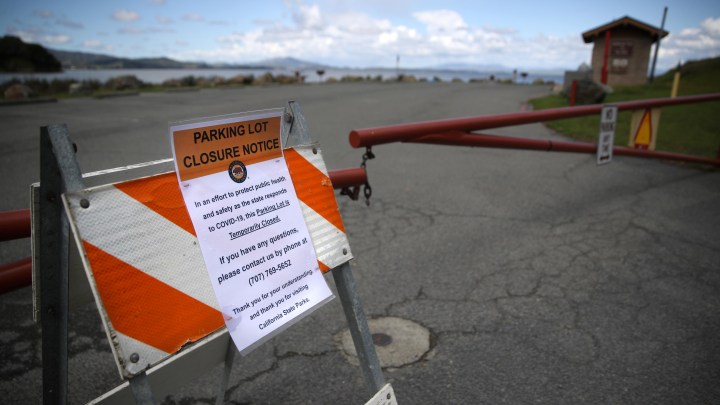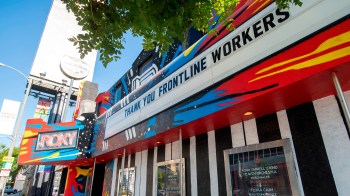
How national and state parks are handling COVID-19 closures

If you’ve got the urge to get out during these times of social isolation and shelter in place, you’re not alone. And the first place that pops into your mind when you think about where you could go to get fresh air (while still keeping your distance) might be a national or state park.
It turns out many Americans have the same idea.
Last Tuesday, the National Park Service closed Yellowstone, Grand Teton and the Great Smoky Mountains national parks, three of the busiest, over concerns about crowding amid surges in visitors. They join hundreds of other recreation sites across the country that are denying visitor access to prevent social congestion, which poses the risk of spreading the novel coronavirus.
With stores, restaurants and schools closed, people have extremely limited options for how they can spend their time. That’s, of course, by design — “at least 229 million people in at least 26 states, 66 counties, 14 cities and one territory are being urged to stay home,” according to a running count from The New York Times. But, especially in areas that aren’t hot spots, folks are willing and able to get out. More expansive locations like parks are preferable to city centers or narrow streets.
The result? Great Smoky Mountains National Park officials, for example, announced that “visitors from across the country have flocked to the area due to spring break, wildflowers and warm weather conditions.” They say that in the week before closing, approximately 30,000 people entered the park — which lies on the border of North Carolina and Tennessee — every day. That’s up 5,000 a day from last March.
The Maine Department of Agriculture, Conservation and Forestry told the Bangor Daily News it estimates “the busiest state parks generally are seeing a 30% to 50% increase in traffic.”
And parks are not exactly discouraging this behavior: many have actually waived entrance fees. That includes all national parks and some state parks, like those in Wisconsin and New York. National park entrance fees can range from $5 per person to $35 per vehicle.
In other words, one of the only options people really have when they’re looking for something to do is, in many cases, free. Maybe campgrounds, visitor centers or even bathroom facilities are closed, but the parks themselves are open.
Interior Secretary David Bernhardt said in a statement announcing the waived fees for national park entry that these public spaces “offer special outdoor experiences to recreate, embrace nature and implement some social distancing.”
Standing in contrast to this position is Rep. Raúl Grijalva (D-Ariz.), the chairman of the House Natural Resources Committee. “For someone in Secretary Bernhardt’s position, it is cavalier at best and profoundly dangerous at worst to encourage public lands visits without encouraging all visitors to avoid crowding of high-traffic areas and popular parks. He should revise his recommendations to better reflect the advice of public health experts,” Grijalva said in a statement.
The mixed messaging from governments concerning park closures continues at the state level. While somewhere like Florida has decided it must close all state parks to uphold CDC guidelines on social distancing, Minnesota is taking a different tack, only closing certain buildings or programs. “But nature is still there. You can be too,” read one tweet from the Minnesota Department of Natural Resources.
Whether you’re looking for exercise, a change of scenery or a moment of solitude, if you’re going to visit a park, there are measures you can take (beyond following CDC guidelines) that could help keep you safe. The Connecticut Department of Energy and Environmental Protection, for example, has offered up some advice to its state park-goers: instead of choosing a popular spot, visit a park you’ve never been to or one closer to home.
The safest way of all to visit the park of your choice is doing so virtually. As the National Park Service says, “You don’t have to be in a national park to experience a national park!” Its website offers webcams to watch wildlife and the National Mall cherry blossoms, daily virtual tours of the USS Constitution and more.
There’s a lot happening in the world. Through it all, Marketplace is here for you.
You rely on Marketplace to break down the world’s events and tell you how it affects you in a fact-based, approachable way. We rely on your financial support to keep making that possible.
Your donation today powers the independent journalism that you rely on. For just $5/month, you can help sustain Marketplace so we can keep reporting on the things that matter to you.


















